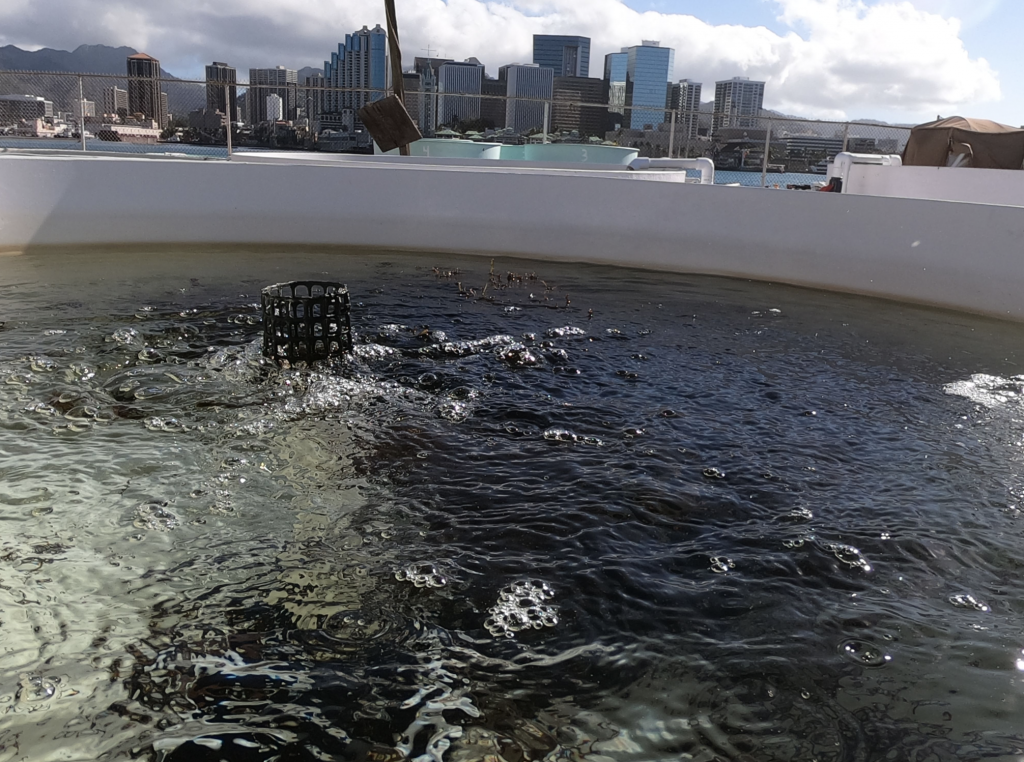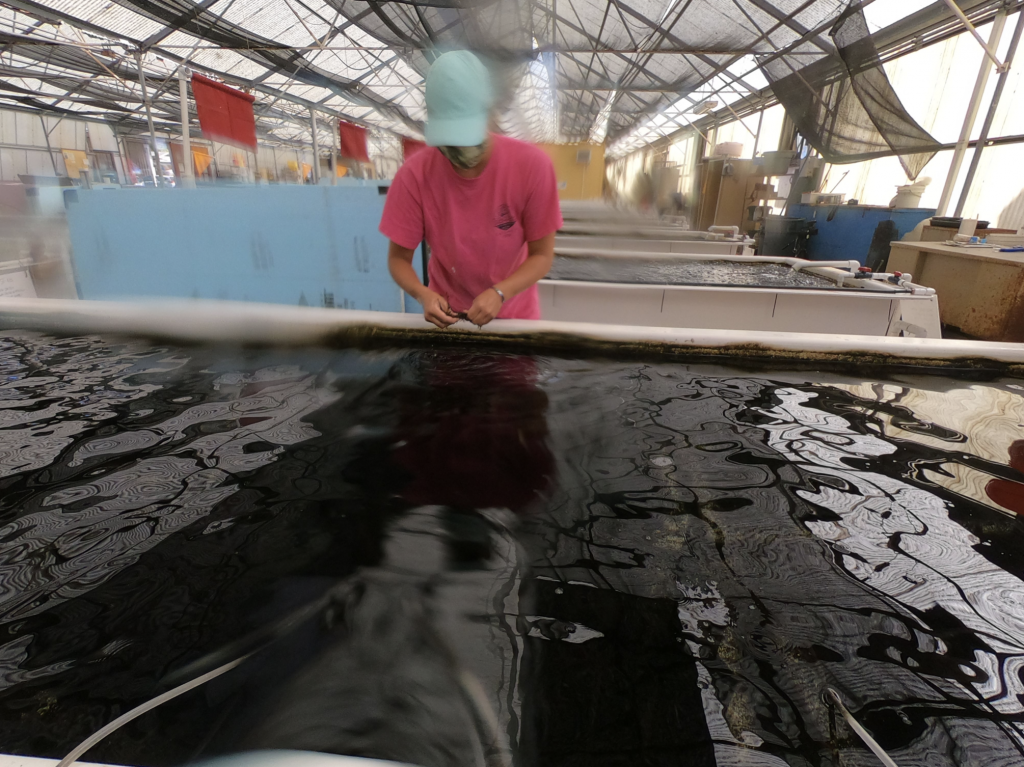Urchin hatchery munches its way toward a milestone, with the help of native limu

Hawai‘i celebrates 2022 as “The Year of the Limu,” as proclaimed by Governor David Ige earlier this year.
Meantime, little urchins growing in tanks at the DLNR Anuenue Fisheries Research Center on Sand Island, munch on hatchery-grown seaweed.
“It’s certainly ironic that we’re feeding urchins with a native limu species to get them large enough to go out into the field to eat invasive seaweed,” said David Cohen, urchin hatchery manager with the DLNR Division of Aquatic Resources.

For more than a decade, urchins have been raised at the hatchery for eventual planting in Kāne’ohe Bay or offshore at Waikīkī. They’re collector urchins and their mission in life is to devour invasive seaweed that chokes coral colonies. This year, workers at the hatchery expect to reach a milestone, having out-planted one-million urchins, according to a DLNR press release.
Cohen said, “When we set up the urchin hatchery, we began targeting two invasive seaweeds found in Kāne’ohe Bay. We didn’t want to grow a non-native or invasive seaweed because we feared we might end up proliferating invasive seaweed out in the marine environment. So, they’re only fed native limu until they’re big enough to go out into the field and to begin eating invasive seaweed.”
When urchins are between five and 15 millimeters in size…about the size of a pencil eraser…they’re large enough to start eating seaweed. During this two-to-three-month period, the native seaweed is their primary source of nutrition. They’re released when they’re about the size of a dime. “Limu has a variety of beneficial uses. For us, the primary purpose for the limu is to feed it to the urchins until they’re large enough to go out into the field,” Cohen added.
Limu is a primary food source for people in Hawai‘i, across the Pacific, and all over the world.

The hatchery team grows a beautiful seaweed, commonly called red sea lettuce or lepe-o-Hina in Hawaiian. It is a fast growing, native limu, but for some reason the urchins don’t really like to eat it. Cohen remarked, “It’s kind of a double-edged sword. It grows nicely and looks great. However, it’s not a great food for the urchins. We’re using it more for native limu restoration purposes.”
Daily, hatchery technicians keep a close eye on urchins in dozens of long tanks. At feeding time, they clean-up the limu with a fresh-water rinse, break it up, and place it in the urchin tanks.

“It’s a native limu and the urchins love it. Out in the wild they’ll eat anything, and work by a graduate student shows the collector urchins do prefer the invasive seaweeds. In our hatchery they grow-up as limu connoisseurs, feeding on the best native seaweed. Once they’re out in the ocean they become fast-food consumers,” Cohen joked.
Collector urchins are credited with vast improvements of coral and fish habitat to the numerous patch reefs in Kāne’ohe Bay, since the project began.









